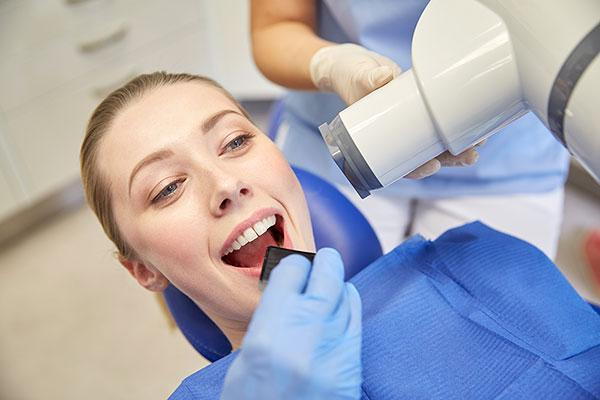Introduction
When it comes to dental care, X-rays play a crucial role in diagnosing various oral health issues. However, concerns regarding the safety of dental X-rays have emerged. Patients often wonder how many dental X-rays are safe to undergo within a month. In this article, we will delve into this topic and provide valuable insights into the safety guidelines, frequency of X-rays, and their importance in maintaining optimal oral health.IF you have any more question then visit our website https://cincinnatidentalservices.org
Understanding Dental X-Rays
Dental X-rays, also known as radiographs, are diagnostic tools used by dentists to visualize the internal structures of teeth, gums, and jaws. These images provide valuable information that helps dentists detect hidden dental problems, such as cavities, impacted teeth, abscesses, and bone diseases.
The Purpose of Dental X-Rays
Dental X-rays serve various purposes, including:
1. Detection of Dental Issues
X-rays enable dentists to identify dental problems that are not visible to the naked eye. By detecting issues at an early stage, dentists can provide timely treatment, preventing further complications.
2. Treatment Planning
X-rays aid dentists in creating an effective treatment plan for their patients. They help determine the best course of action, whether it’s a simple filling, orthodontic treatment, or oral surgery.
3. Monitoring Dental Development
In children, dental X-rays are crucial for monitoring the development of permanent teeth and detecting any abnormalities early on.
The Safety of Dental X-Rays
Dental X-rays involve exposure to a small amount of radiation. However, advancements in technology and safety measures have significantly reduced radiation levels, making modern dental X-rays safe for patients. The benefits of X-rays in diagnosing and treating dental conditions often outweigh the potential risks associated with radiation exposure.
Recommended Frequency of Dental X-Rays
The frequency of dental X-rays varies depending on individual needs and oral health status. Dentists assess various factors to determine the appropriate timing for X-rays. As a general guideline, most individuals require dental X-rays once every six to eighteen months. However, specific cases may require more frequent X-rays, especially for individuals with higher risk factors.
Factors Affecting the Frequency of Dental X-Rays
Several factors influence the frequency of dental X-rays:
1. Age
Children may require X-rays more frequently as their teeth and jaws are still developing. Adults with healthy teeth and gums may need X-rays less often.
2. Oral Health History
Individuals with a history of dental problems, such as tooth decay, gum disease, or previous oral surgeries, may need X-rays more frequently to monitor their condition.
3. Symptoms and Pain
If a patient experiences unexplained oral pain or symptoms, additional X-rays may be necessary to identify the underlying cause.
4. Risk Factors
Patients with risk factors such as smoking, poor oral hygiene, or systemic health conditions may require more frequent X-rays to ensure early detection and effective treatment.
Risk Factors Associated with Dental X-Rays
While dental X-rays are generally safe, it’s important to consider certain risk factors:
1. Radiation Exposure
Although modern dental X-rays use minimal radiation, repeated exposure over time can still pose a risk. Dentists follow strict guidelines to minimize radiation exposure and ensure patient safety.
2. Pregnancy
Pregnant women are advised to avoid routine X-rays, especially during the first trimester. However, if necessary, dental X-rays can be performed with proper shielding to protect the developing fetus.
3. Radiation Sensitivity
Individuals with a history of radiation therapy or certain genetic conditions may be more sensitive to radiation. Dentists take this into account when assessing the need for X-rays.
Minimizing Radiation Exposure
Dentists employ various techniques to minimize radiation exposure during dental X-rays:
- Lead Aprons and Thyroid Collars: Patients are provided with lead aprons and thyroid collars to shield their bodies from unnecessary radiation.
- Digital X-Rays: Digital X-ray systems reduce radiation exposure by up to 80% compared to traditional film X-rays.
- Cone Beam Computed Tomography (CBCT): CBCT technology produces highly detailed 3D images while using lower radiation doses.
Alternative Imaging Techniques
In certain cases, dentists may consider alternative imaging techniques that reduce or eliminate radiation exposure:
- Intraoral Cameras: These cameras capture detailed images of teeth and gums, providing a visual record of oral health.
- Panoramic X-Rays: Panoramic X-rays capture a wide view of the entire mouth, minimizing the need for multiple X-rays.
- Magnetic Resonance Imaging (MRI): For complex cases, dentists may refer patients to MRI scans, which do not involve radiation.
Communicating with Your Dentist
Maintaining open communication with your dentist is essential to address any concerns regarding dental X-rays. Make sure to discuss the following:
- Provide your complete oral health history, including previous X-rays and any radiation treatments.
- Inform your dentist if you are pregnant or suspect you might be.
- Discuss any symptoms or pain you are experiencing to determine if X-rays are necessary.
Conclusion
Dental X-rays are invaluable tools in diagnosing and treating various oral health conditions. The safety of dental X-rays has significantly improved over time, with low radiation exposure and advanced imaging techniques. By following recommended guidelines and communicating with your dentist, you can ensure optimal oral health while minimizing potential risks associated with X-rays.
FOR MORE
For more informative and knowledgeable blogs or articles visit our website https://cincinnatidentalservices.org
Frequently Asked Qestions
Yes, dental X-rays are safe. With modern technology and safety measures, the radiation exposure is minimal, and dentists take precautions to protect patients.
The frequency of dental X-rays depends on individual needs and oral health history. In general, most individuals require X-rays once every six to eighteen months.
Pregnant women are generally advised to avoid routine X-rays, especially during the first trimester. However, if necessary, dental X-rays can be performed with proper shielding.
Yes, there are alternative imaging techniques such as intraoral cameras, panoramic X-rays, and MRI scans that reduce or eliminate radiation exposure.
Dentists use lead aprons, thyroid collars, digital X-rays, and cone beam computed tomography (CBCT) to minimize radiation exposure during dental X-rays.

